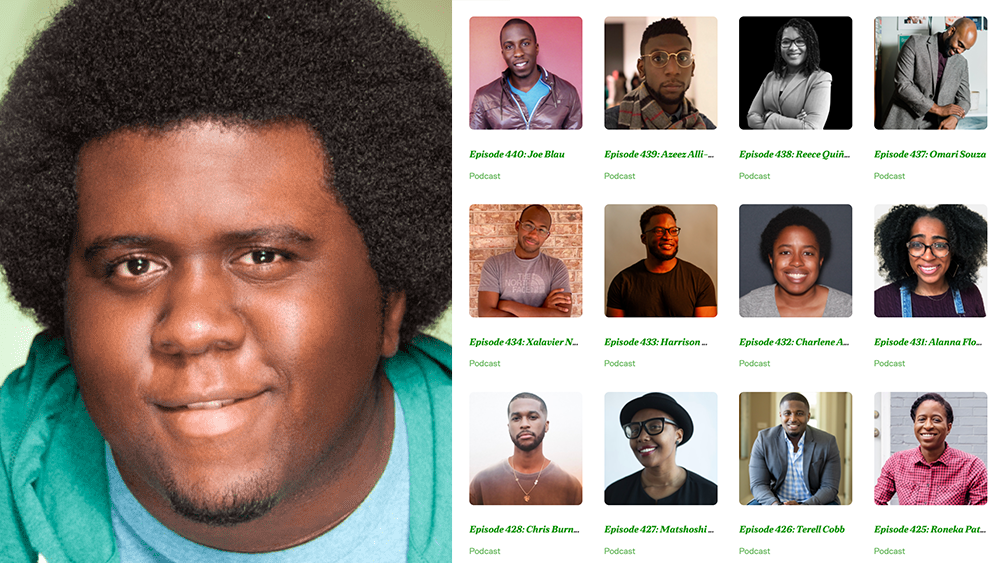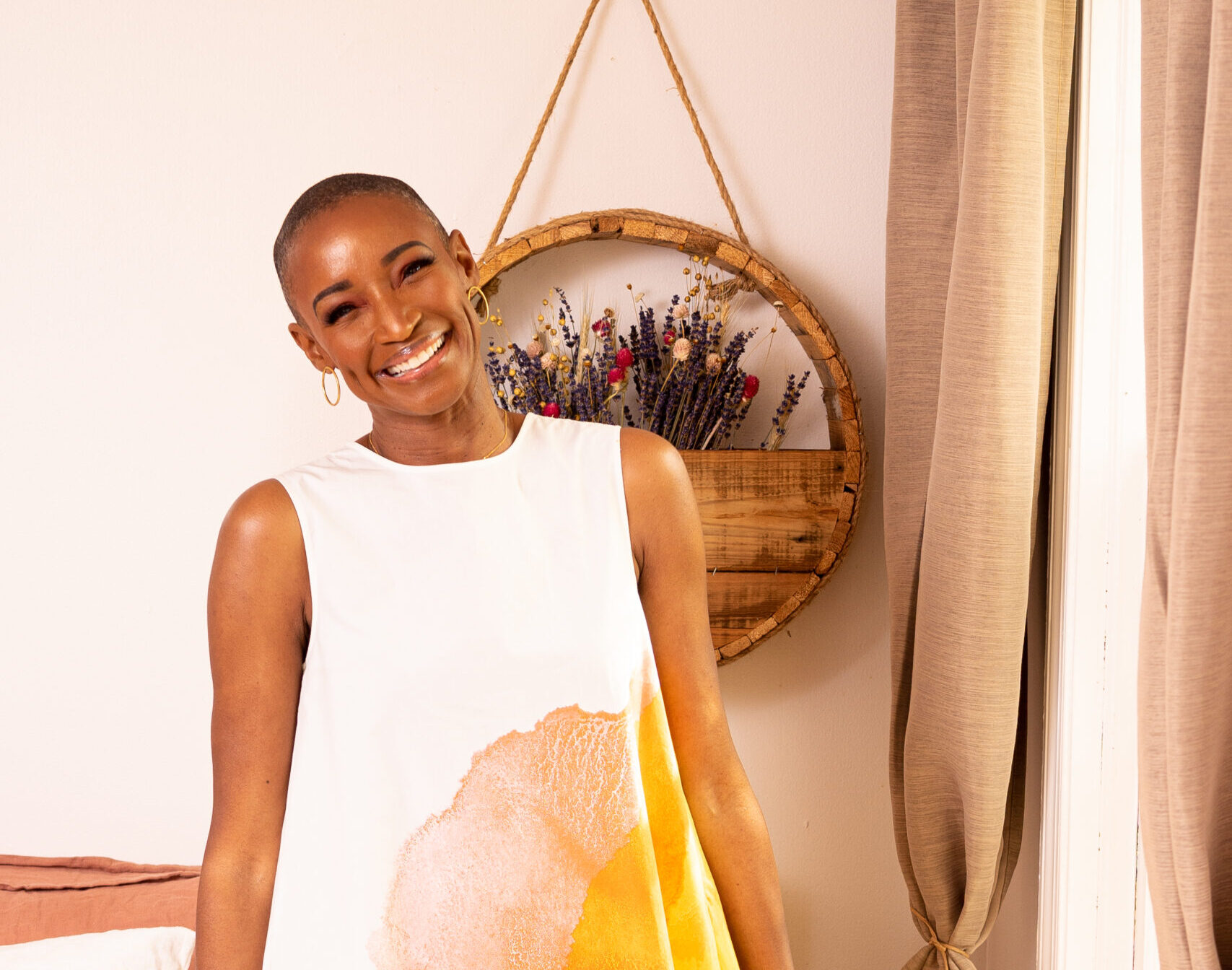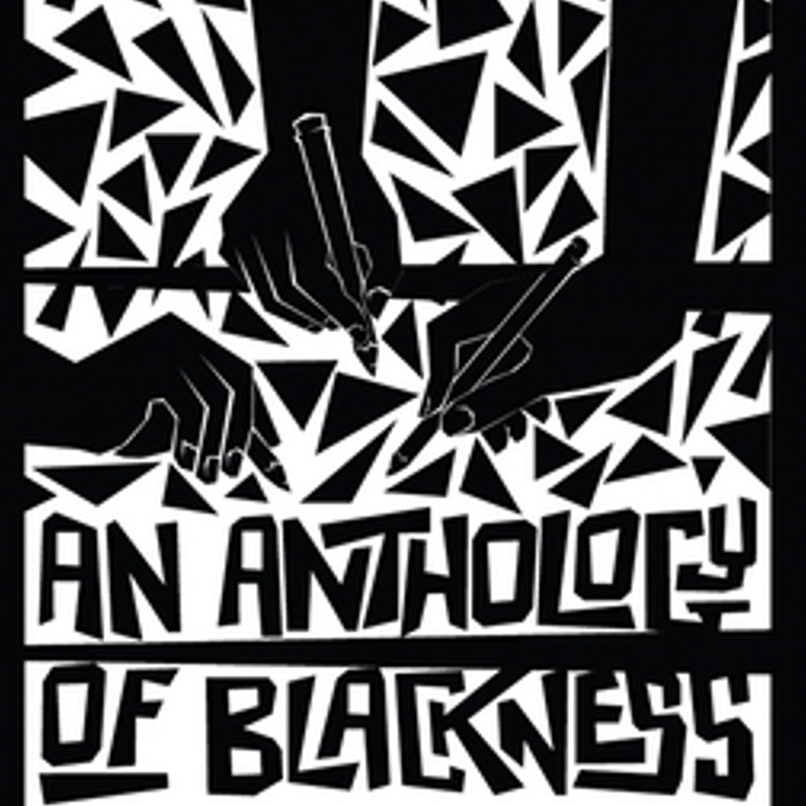
Maurice Cherry|Books
March 8, 2022
Make the Path by Talking

Editor’s Note: The following excerpt is from The Black Experience in Design: Identity, Expression & Reflection, edited by Anne H. Berry (Managing Editor), Kareem Collie, Penina Acayo Laker, Lesley-Ann Noel, Jennifer Rittner (Developmental Editor), and Kelly Walters (Creative Director), out now from Skyhorse Publishing and is reprinted here with permission of the editors and publisher. The 595 page anthology centers a range of perspectives, spotlights teaching practices, research, stories, and conversations from a Black/African diasporic lens. Through the voices represented, this text exemplifies the inherently collaborative and multidisciplinary nature of design, providing access to ideas and topics for a variety of audiences, meeting people as they are and wherever they are in their knowledge about design.
The Birth of Revision Path: The year is 2006.
At the time, I worked for a large telecommunications company as a senior web designer, and I was a full-time graduate student. Outside work, I had created a side project called the Black Weblog Awards, an annual awards event where I gave recognition to Black bloggers in several different categories.
One of the categories was “Best Blog Design,” and I made that category as a way to recognize some of the fantastic visual design work being done on simple Movable Type or WordPress or Blogspot sites. I knew Black designers—friends of mine, in most instances—who were doing phenomenal work for big companies, celebrities, and professional musicians. However, they were not getting any sort of recognition for it from their peers or the design community as a whole. So while I created this category initially as a way for them to get some shine, I also wanted to do something much bigger. Design magazines and websites back then really did not feature work from Black designers, and I wanted to fill that void. Unfortunately, I had too many other responsibilities and couldn’t dedicate myself to making it happen. It took seven years before the opportunity finally presented itself for me to create a platform to allow that very thing to happen—Revision Path.
The goal for Revision Path was to create an online magazine featuring weekly long-form, in-depth interviews with Black designers and other digital creatives. I wanted it to resemble some of the other online magazines of the time, but I ran into one major issue pretty quickly—finding enough Black designers to profile! I thought it would be easy at first, but also I found that sustaining a regular weekly format at the time wasn’t going to work. When I set out to create Revision Path in this iteration, I wasn’t thinking of community—I was thinking of media. And really, there was a lot of trial and error in those early days. I made it up as I went along, and I did not have any type of community support to accomplish what I wanted to do. I still managed to interview some Black designers, but the publishing frequency was not consistent, and I was not building an audience. There were many times when I wondered if I should just stop what I’m doing. But one day, I got an email from a Chicago designer who wanted to be interviewed for Revision Path, and that request ended up changing Revision Path’s entire trajectory.
REVISION PATH 2.0: THE PODCAST
I see on your Twitter page that you are in Atlanta. I just happen to be traveling there next Thursday if you want to try to schedule an interview while I’m in town. My partner and I will be there for about a week so I’m pretty flexible as far as scheduling goes. Hopefully, we can connect soon.
I had not even thought about interviewing in-person, but now I have someone who not only wants to be on Revision Path—my first inbound interview request!—but they were also going to be in town. Without hesitation, I said yes. However, I did not have any recording equipment! We met a few days later for lunch, and I used my mobile phone as the microphone and we recorded what became the first episode of Revision Path’s podcast. You can go and listen to it today! That meeting opened my eyes to how I could publish interviews faster—turn the online magazine into a podcast. And so, in March 2014, Revision Path relaunched as a podcast with a little over a dozen episodes.
Now I entered a whole new space—the design podcast community. At the time, there were probably around two dozen design-focused podcasts publishing regularly, including well-known shows like Design Matters with Debbie Millman, 99% Invisible, and Adventures in Design. As the podcast went on, I would reach out to other design podcasts to introduce myself, let them know about the work that I was doing with Revision Path, and offered to introduce my guests to their audience so they could get additional press. (You can call that last one a bit of subversive diversity and inclusion work.) Most of my messages were ignored, and the few that did reply had very negative things to say. I was called a racist for only interviewing Black guests, and was often told by other design podcasters at the time that they didn’t do “race stuff.”
I also attracted the attention of AIGA, the professional association for design. I did not have a great experience with AIGA just based on my local chapter, and several people I interviewed for the podcast also spoke negatively about the organization. But after interviewing Antionette Carroll for the podcast back in 2014, I was asked to join AIGA’s Diversity and Inclusion Task Force. I gladly accepted and looked forward to the opportunity to help make some change from within.
The combination of being a part of these two communities ended up putting a spotlight on Revision Path, and on me. It was difficult to find acceptance and fellowship in these spaces. I received some public social media backlash, although most of the harshest criticism came in private. Some people even wrote to my studio saying that I should be fired (which would be hard since I owned the studio). Eventually, this made finding guests difficult, because who wants to be a part of something that’s stirring up controversy? I still managed to keep the podcast on track from week to week, even getting up to one hundred episodes, but every single episode was a fight because I felt like I wanted to quit. My design podcast peers weren’t recognizing the work, and it just felt like I was doing this by myself without any support.
WHERE ARE THE BLACK DESIGNERS?
In March 2015, I had the opportunity to speak at SXSW, a multi-week event with interactive, film, and music tracks that contained panels, performances, movies, and other sorts of events. I put together a presentation along with AIGA to talk about Black designers, and to answer one of the most common questions I received since starting the platform—where are the Black designers? Because SXSW accepted my panel only three months before the event, I had to raise two thousand dollars for travel and accommodations, and I had no idea how this panel would even be received.
SPOILER ALERT: THE PRESENTATION WAS NOT WELL ATTENDED
My talk was in the farthest part of the convention center on the top floor, and it happened to be in the exhibit room right next to a talk from a popular late-night talk show host. My exhibit room ended up serving as a bit of a rest area, as some people attended just to charge their phones. Overall, there were about fifteen to twenty people in a room that could comfortably seat ten times that amount. Even with such a small turnout, I gave the presentation with the same zeal and fervor that I would if I had a packed house. And for the people who were there, I believe they were greatly impacted by the message I delivered. One of the people there happened to work for Facebook, and I was invited to the Facebook House at SXSW to talk to people there about the work that I was doing with Revision Path and my presentation. I was extremely surprised that Facebook wanted to support the platform financially. At this time, Facebook had not sponsored any podcasts before us, making us the first (if not one of the first).
What a difference a new sponsor makes! Their support somehow legitimized Revision Path’s work in the eyes of others. More companies flocked to Revision Path and also wanted to support the platform, including Hover, Creative Market, and Google. We opened a Patreon page and began to receive monthly support from listeners. Thanks to Fund Club, a community-operated project funding model, we received over eight thousand dollars in donations, which helped Revision Path continue to grow as a platform and a burgeoning community.
If my SXSW presentation didn’t answer the question of “where are the Black designers,” then this support from the design and tech communities showed that they were interested in encouraging my path to becoming the response.
IT’S NOT A SPRINT, IT’S A MARATHON
With this influx of cash, it was now time to really expand Revision Path. I launched a job board, I expanded Revision Path’s blog coverage with more writers, and I started to help support other Black design initiatives and events to get ourselves out there more into the design community. I knew Revision Path was making an impact, but I really felt that impact when I heard from students and educators about how they were using Revision Path and learning about Black designers through the interviews. These were people from all over the world too—Brazil, Australia, Nigeria, Canada, Japan . . . and of course, in the United States. At some point, Revision Path became more than just a weekly podcast—it was becoming curriculum right alongside other design material.
Also, it was becoming history. In 2018, I was awarded the Steven Heller Prize for Cultural Commentary by AIGA “for being a renaissance talent who works seamlessly across cultural domains, editorial lines, and multiple forms of media” and “for being the definitive leader in bringing Black designers to the public, earning [me] a permanent place in the history of design, design equity and social justice.”
In 2019, Revision Path reached three hundred episodes and later that year became the first podcast to be inducted into the Smithsonian’s National Museum of African American History and Culture. It still astounds me to think of how something as simple as talking to my peers and giving them a platform to talk about their work was now a part of history. Not just design history. Not just Black history. But capital H history.
THE PATH CONTINUES
One of the biggest lessons that I’ve learned from Revision Path is the importance of tending to the audience that you have instead of trying to attract the audience that you want. I tried so hard in the early days of Revision Path to get the larger design community and other design podcasts to recognize the work that I was doing. But in doing that, I was neglecting my own audience—the day-ones who have followed me from the beginning and have been the most invested in Revision Path’s success. Over the years, I had to learn to run my own race and stay in my lane.
I also learned that merely celebrating yourself as a Black designer is an act of rebellion. The design industry, for what it’s worth, talks a lot about diversity and inclusion and equity, but I know that these have been perennial conversations since well before my time. Instead of trying to force others to recognize the heart and depth and influences that exist within Black design, Revision Path allows Black designers to talk in their own words with no whitewashing, no oversight from sponsors, and no corporate controlling interests. It’s just them and the microphone, and I am their intrepid field guide.
I have been very fortunate to build this platform and become a part of the design community, not to mention help connect Black designers, developers, and other digital creatives from all over the world. As we move forward, I am thankful for how technology and design allow us to build spaces like this to share conversations and to meet and reach others. Who knows what the future will bring?
Observed
View all
Observed
By Maurice Cherry
Related Posts

Sustainability
Delaney Rebernik|Books
Head in the boughs: ‘Designed Forests’ author Dan Handel on the interspecies influences that shape our thickety relationship with nature

Design Juice
L’Oreal Thompson Payton|Books
Less is liberation: Christine Platt talks Afrominimalism and designing a spacious life

The Observatory
Ellen McGirt|Books
Parable of the Redesigner

Books
Jennifer White-Johnson|Books
Amplifying Accessibility and Abolishing Ableism: Designing to Embolden Black Disability Visual Culture
Recent Posts
Minefields and maternity leave: why I fight a system that shuts out women and caregivers Candace Parker & Michael C. Bush on Purpose, Leadership and Meeting the MomentCourtney L. McCluney, PhD|Essays
Rest as reparations: reimagining how we invest in Black women entrepreneurs Food branding without borders: chai, culture, and the politics of packagingRelated Posts

Sustainability
Delaney Rebernik|Books
Head in the boughs: ‘Designed Forests’ author Dan Handel on the interspecies influences that shape our thickety relationship with nature

Design Juice
L’Oreal Thompson Payton|Books
Less is liberation: Christine Platt talks Afrominimalism and designing a spacious life

The Observatory
Ellen McGirt|Books
Parable of the Redesigner

Books
Jennifer White-Johnson|Books
